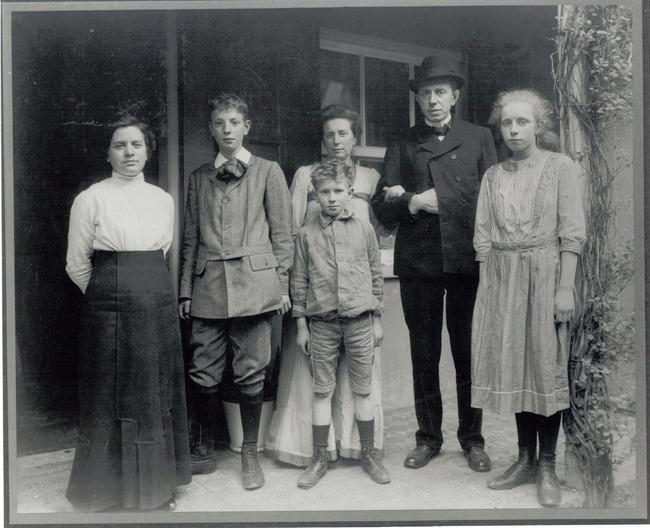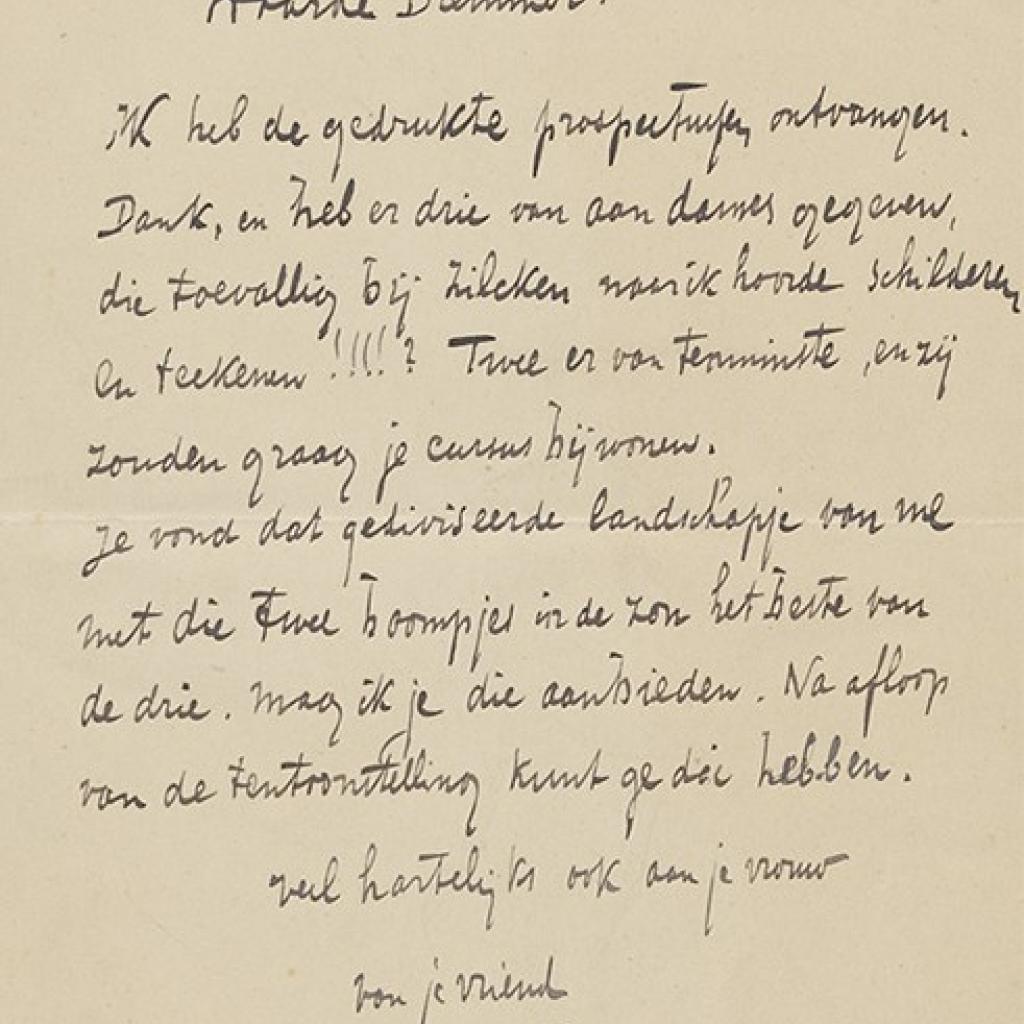H.P. Bremmer

If you look up the name H.P. Bremmer in RKD Research you will be served up an impressive array. The RKD clearly stores a wide range of information about Bremmer: biographical information, images of works of art, portraits, literature, archive material as well as printed ephemera by and about him. It goes without saying that Hildelies Balk’s hefty 2006 biography De Kunstpaus H.P. Bremmer 1871-1956 can be found in the library. Bremmer is a truly striking figure in the world of modern art and culture.
Intriguing personality
Hendricus Petrus Bremmer (1871-1956) was an intriguing personality, blessed with varied talents, whose influence on the pre-war art world was wide-reaching. He advised on the acquisition of works of art, he published an art journal and provided expertises on works of art from several different periods, as well as explaining the meaning of modern art to women from the upper echelons. For a time, he was also active as an artist himself. A photograph from c. 1913 shows Bremmer with his family posing in the garden of his house in the Trompstraat in The Hague. To the left we see the children’s nanny; next to Bremmer, who is standing in Napoleon pose, hand-in-waistcoat, is his loyal wife Aleida, with their children to the front. His son Rudolf (left) would later turn into a competent painter who made several portraits of his father. At this moment, Bremmer’s brief career as an artist was already behind him, and he had in the meantime made a name as an art educationist.




Artist
From 1890 onwards, Bremmer began to mix in artistic circles in Leiden and The Hague, where he came into contact with many leading artists from Belgium and the Netherlands. He also took a few tentative steps himself as an artist, mainly self-taught. His paintings from the years 1890-1895 show that he liked to paint quiet subjects, which he represented in a rather stiff, pointillist style. Although he soon afterwards put away his palette and brushes for good, he maintained a life-long affection for intimate subjects presented in a realistic, traditional style. This way of working was even given its own name: ‘Bremmeriaans’ (‘Bremmerite’).
Art educationist
But his true calling seems to have lain elsewhere: around 1900 Bremmer made the transition from practising artist to art educator. His spiritual view of art, which came to be known as Practical Aesthetics, was especially popular with women from the upper classes. He wrote several books in which he explained his vision for students. In addition, from 1903 until 1910 he published the magazine Moderne Kunstwerken which provided a platform for many of his protegés. He gave classes in aesthetics and on his philosophy of art in his own home as well as elsewhere in the country. His most famous and important follower was Helene Kröller-Müller, who took Bremmer’s courses from 1905. She soon began to call him her ‘mentor’ and engaged him as advisor for her growing art collection. Under his spirited leadership it was not only Helene’s art collection that grew substantially, but many other wealthy art lovers in the Netherlands formed similar collections with a Bremmerite flavour. In this way Bremmer began to use his influence by bringing certain artists, whom he was supporting financially, to the attention of art buyers. As his popularity and authority grew in strength, his activities as teacher, connoisseur and dealer became more and more intertwined. As well as being an art educator, Bremmer was also much in demand as an expert, both for old masters and for modern art.






Art tsar
In his various capacities Bremmer was thus an influential figure in the Dutch art world in the period 1900-1940. He was aptly nicknamed the ‘art tsar’. The many documents relating to Bremmer in the RKD reflect the significance and scope of his areas of expertise. One of the things that emerges from the correspondence of the period 1894-1927 held by the RKD is that Jan Toorop was among Bremmer’s early friends. In 1898 Toorop wrote to Bremmer: ‘I have received the printed prospectuses. Thanks, and I have given three of them to ladies who, from what I have heard, paint and draw with Zilcken!!! In any case two of them do, and they would love to attend your course. You found my little divisionist landscape painting with the two little trees in sunlight the best of the three. Would you like to have it? It can be yours as soon as the exhibition is over. Best wishes also to your wife. From your friend, J. Th. Toorop.’ This letter from Toorop is a nice example of the mixing of Bremmer’s roles as publicist, art buyer and lecturer.
